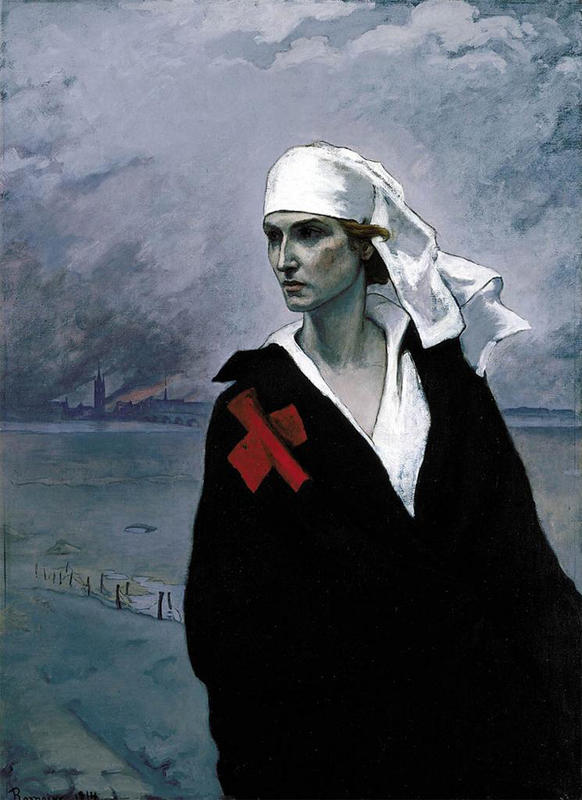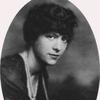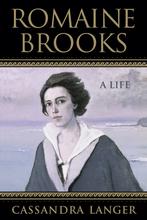More about The Cross of France
- All
- Info
- Shop

Sr. Contributor
The true story of a lesbian love affair a century before "Blue is the Warmest Color."
An artist’s love for their muse, as seen here in La France Croisée, dates back as far as Thalia, Muse of Comedy and the other eight Muses of ancient Greece. Ida Rubinstein, Romaine Brooks’ favorite muse, was an alluring woman who many had trouble wrapping their heads around. Her parents’ version of support was having her institutionalized after her risqué dance of the seven veils in a performance of "Salome."
After escaping said mental institution, Rubinstein had a successful dance career in France and became the “Lady Gaga” of her day. It was at a performance of "The Martyrdom of St. Sebastian" that got her excommunicated by the Parisian archbishop where she met Romaine Brooks and fell deeply in love.
Brooks thought her to be an ideal beauty, celebrating and immortalizing her nude form in several paintings. At the time, her work was controversial: nudity in art wasn’t uncommon, but it was unheard of for a woman to paint a nude woman. Apparently, male art critics of the time had even less understanding of the female gaze than men do now.
The inspiration behind La France Croisée was the advent of World War I and Rubinstein nobly putting her dancing career on hold to volunteer for the war effort. Of course, she didn’t start volunteering until after her lifelong best friend and famous costume designer Léon Bakst commissioned her a specially tailored nurse’s uniform.
Unfortunately for the two lovers, much like the affair of Adele and Emma, their love was not to last. Brooks was more in love with Rubinstein’s beauty as a model than as a lifetime partner. Rubinstein saw an idealized life for them on the countryside, something in line with The Lane of Poplars at Moret, but this did not sit well with Brooks. She told her it was time she started painting other people and moved on.
Sources
- Catlin, Roger. "The World Is Finally Ready to Understand Romaine Brooks." Smithsonian.com. July 08, 2016. Accessed August 31, 2018. https://www.smithsonianmag.com/smithsonian- institution/its-time-acknowledge-romaine-brooks-early-20th-century-artist-18095
- Michalska, ByMagda. "The Nude Love of Ida Rubinstein and Romaine Brooks." DailyArtMagazine.com - Art History Stories. March 27, 2018. Accessed August 31, 2018. http://www.dailyartmagazine.com/love-of-ida-rubinstein-and-romaine-broo….
- Sicherman, Barbara, and Carol Hurd Green. Notable American Women ; the Modern Period a Biographical Dictionary. Cambridge, MA: Belknap, 1983.












